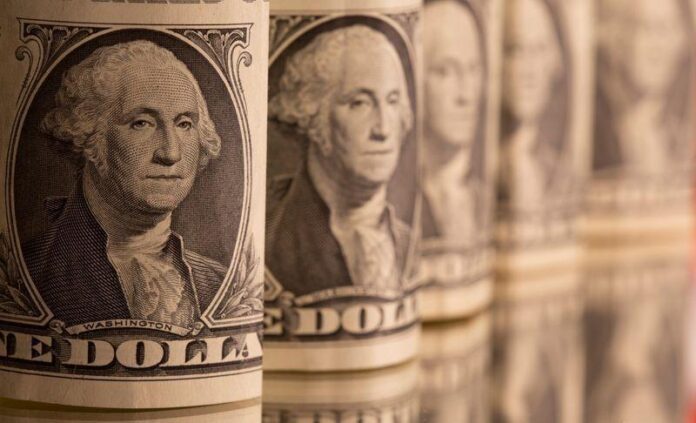| Translate This News In |
|---|
The U.S. dollar touched a new six-month high against the yen and on Thursday extended a rebound from a three-year low to the Aussie, lifted overnight by a sharp increase in U.S. bond yields.
After traders aggressively moved to price in earlier monetary tightening than signalled by the Federal Reserve and its peers, government bonds, and especially U.S. Treasuries, have become the focal point of markets globally.
A global equity sell-off was expanded by Asian stocks, with risk appetite souring as the increase in yields fostered inflation concerns. Currencies linked to emerging markets and commodities continued to retreat on Thursday, while cryptocurrencies stabilized overnight after tumbling.
“In the second half of the year, the market has become increasingly confident about how strong the global economy might look, implying increasing skepticism that central banks will be able to fulfill the promises they have made that rates will not go anywhere,” said Ray Attrill, head of forex strategy at Sydney’s National Australia Bank.
He said, “The decline in bonds spooked equities,” resulting in “classic U.S. dollar safe-haven support.”
The dollar index rose to 90.38, holding on to a rise of 0.2 percent from Thursday when it recovered from losses of up to 0.26 percent prior to the bond tender. That leaves it down less than 0.2 percent for the month, after a 0.6 percent gain in January.
After earlier touching 106.43 for the first time since September, the greenback was little altered at 106.165 yen. After the first monthly back-to-back increases since mid-2018, it has improved 2.8 percent this year, putting the yen among the worst-performing major currencies in 2021.
The dollar and the yen are both traditional haven currencies, but when U.S. yields rise, the yen tends to decline, while the dollar tends to strengthen.
In the midst of continued ultra-easy monetary policy, led by the United States, bond yields have soared this year on the outlook for massive fiscal stimulus.
What has become known as the reflation trade, referring to bets on an upswing in economic activity and prices, has also been supported by an acceleration in the pace of vaccinations globally.
However, an increase in inflation-adjusted bond yields has accelerated in recent days, indicating a growing belief that, despite their dovish rhetoric, central banks may have to reverse ultra-loose policies.
It seems to be the case that bond markets “take on” the world view of central bankers, and it is unwise to stand in front of the current momentum.
For the first time in a year, the benchmark 10-year Treasury yield rose above 1.6 percent overnight after an auction of $62 billion of 7-year notes met weak demand.
After topping $0.80 on Thursday for the first time since February of 2018, the Australian dollar continued its retreat, decreasing 0.6 percent to 0.78195.
After reaching $0.7463 on Thursday, New Zealand’s currency fell 0.4 percent to $0.7336, a level not seen since August 2017.
After falling from its own 3-year top to the greenback at C$1.2468 overnight, the Canadian dollar weakened 0.1 percent to C$1.2620.
After touching a seven-week high of $ 1.22435 on Thursday, the euro slipped 0.2 percent to $ 1.21475.
After tumbling overnight, cryptocurrencies remained lower. Following Thursday’s 5 percent slide, Bitcoin changed hands at $46,443, while ether traded at $1,473 following a 9 percent drop.


















